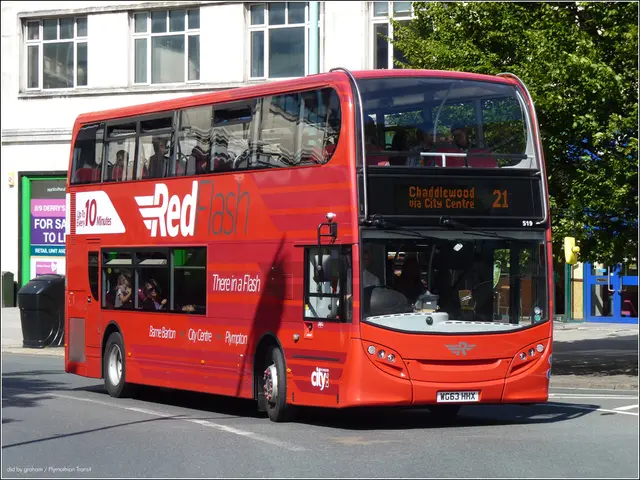Despite exceeding Q1 projections, Rivian reduces 2025 delivery predictions.
In a recent announcement, Rivian's CEO, RJ Scaringe, shared the company's financial momentum, including a positive gross profit milestone that attracted a $1 billion investment from the Volkswagen Group as part of their joint venture. However, Rivian's 2025 vehicle delivery forecast faces several key challenges that could impact its ability to meet its guidance of delivering 40,000 to 46,000 vehicles.
These challenges include supply chain disruptions, regulatory hurdles, tariffs and material costs, competitive landscape, financial and operational strains, softening demand, and logistics complexity. Persistent shortages in semiconductors, battery materials, and specialized components limit production scale-up. Compliance with evolving safety, environmental, and emissions regulations across various states presents compliance costs and operational complexities. Elevated costs due to tariffs on imported auto parts add thousands of dollars per vehicle, increasing production costs and pressuring margins.
Competition against established and emerging EV manufacturers like Tesla, Ford, and Lucid Motors makes market share gains more difficult as competitors have more established supply chains and sales networks. The company faces significant adjusted EBITDA losses tied to investments in new vehicle lines and the need to manage capex guidance to enhance production capacity and supply chain resilience. A strong second-half 2025 is necessary to meet delivery targets due to a sluggish first half. Economic uncertainties and shifting consumer preferences contribute to softer demand, which complicates delivery volume goals and financial forecasts.
Manufacturing disruptions and regulatory changes impact logistics and supply chain planning, further adding risks to timely deliveries. In response to these challenges, Rivian has cut its full-year 2025 delivery target to between 40,000 and 46,000 vehicles.
Despite these challenges, Rivian's Q1 2025 financial performance was stronger than expected. The company achieved its second consecutive quarter of positive gross profit, reaching $206 million in Q1 2025. Rivian reported a net loss of $541 million, a significant improvement over the $1.45 billion loss in the same period last year. The company produced 14,611 vehicles in Q1 2025, down 36% from a year ago, but still surpassing analyst estimates.
Rivian's Q1 2025 revenue rose 3% year-over-year to $1.24 billion, surpassing analyst estimates of $983.65 million. The company reported adjusted earnings per share of -$0.41 in Q1 2025, beating expectations of -$0.76 per share. Rivian hosted over 36,000 demo drives during Q1 2025, the most in its history.
Looking forward, the R2, Rivian's upcoming electric vehicle model, is still on track for the first half of 2026. The reduced delivery target is due to challenges tied to international trade dynamics, including new tariffs that are raising production costs and complicating logistics.
In conclusion, achieving the forecasted deliveries will require overcoming these interconnected obstacles through improved operational efficiency, strong second-half production, and effective cost management.
During the Q1 2025 demonstration drives, Rivian showcased their technology in a demo drive, aiming to attract potential customers. The company's financial performance in Q1 2025 was impressive, with a strong showing in technology and gross profit achievements.




